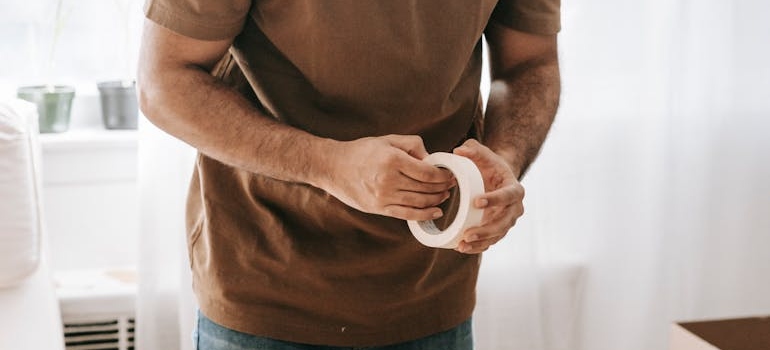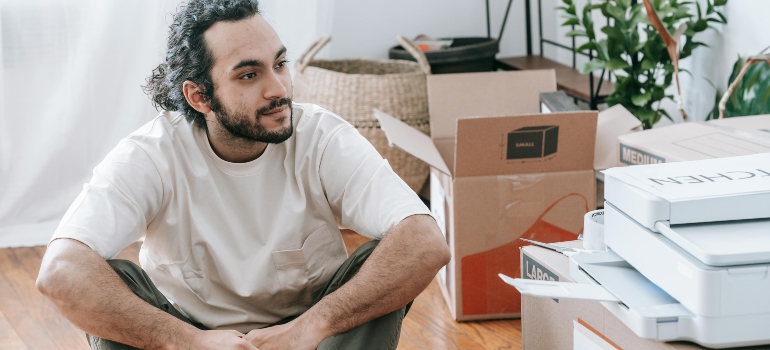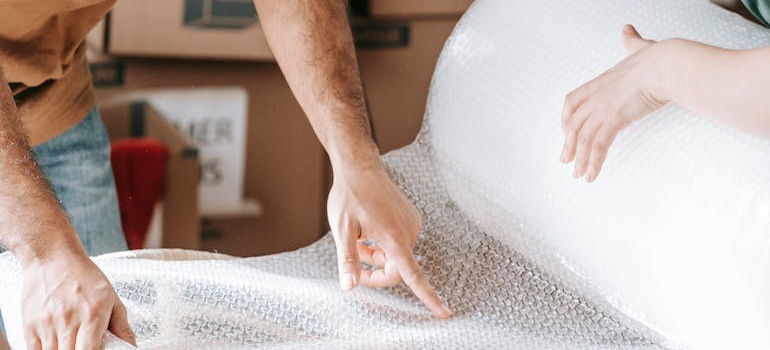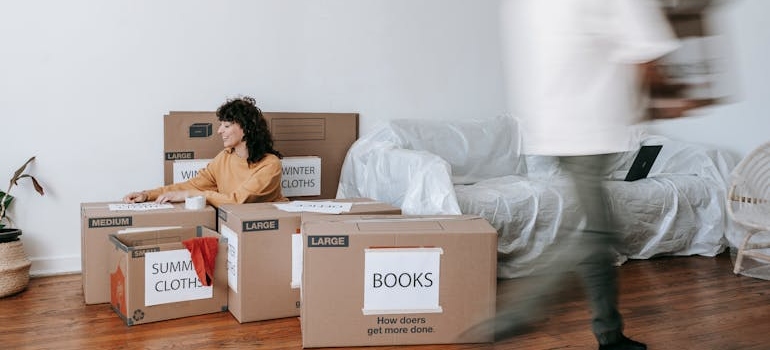Essential Tips on How to Pack for Moving
Dreading mountains of boxes and the chaos of “where does this even go?” Conquering your move starts with a strategic plan, and the best movers and packers Seattle has are here to equip you with the essential knowledge of how to pack for moving home. Forget the stress of tossing things at the last minute—we’ll show you that packing for moving efficiently, staying organized, and maybe even having a little fun in the process is feasible. So, grab your packing tape, and let’s transform your moving day from a frantic scramble into a smooth, stress-free expedition!
Step 1: Preparation and Planning
Moving out requires an organized approach to packing. Begin by creating an inventory of your belongings. This step involves going through each room and listing all items. A detailed inventory helps you track your possessions, decide what to keep or discard, and ease the process of setting up your new home.
Once your inventory is ready, gathering the necessary packing supplies is next. Here’s what you need:
- Small Boxes: These are perfect for heavy items like books, kitchen utensils, and small electronics. Their size makes them easy to handle and prevents overpacking.
- Medium Boxes: Use these for a mix of moderately heavy and lightweight items, such as pots, pans, toys, and non-perishable food.
- Large Boxes: They are ideal for bulkier, lighter items such as bed linens, pillows, and clothes. Despite their size, these boxes should be easy to carry.
- Specialty Boxes: For clothes that need to remain hanging, wardrobe boxes are a great option. They come with a metal bar and are perfect for suits, dresses, and other hanging garments.
- Packing Tape: Invest in high-quality tape to secure the boxes well.
- Bubble Wrap and Packing Paper: Wrapping supplies are essential for protecting fragile items like dishes, glassware, and ornaments to prevent breakage.
- Permanent Markers: For labeling boxes. Clearly write the contents and the destined room in your new home on each box.
Also, consider using suitcases for clothing and sturdy bins for heavier items. These alternatives are not only practical but also eco-friendly. Organizing your packing by room and category, using the right supplies, and labeling everything clearly will streamline your move with a moving company in Washington and reduce stress!

Step 2: Systematic Room-by-Room Packing
After gathering your packing supplies, the next step is a systematic approach to packing each room. This step involves prioritizing items based on their necessity and taking special care of fragile items. Begin by packing items that you use less frequently. This could include seasonal clothing, decorative items, books, and other non-daily-use items. Doing this first reduces clutter and helps in identifying essential items that need to be packed later.
Delicate items require extra attention. Use bubble wrap, packing paper, or towels to protect fragile objects like glassware, lamps, and picture frames. Disassembling furniture (if possible) can make transport safer and more efficient. Wrap pieces in protective material and keep all screws and small parts in labeled bags.
Kitchen Packing
Pack kitchen appliances in their original boxes if available, as these are designed for safe transport. For appliances like the refrigerator, ensure they are defrosted, cleaned, and dried before moving day. Wrap dishes and glassware individually and stack them in boxes with ample padding.
Bedroom and Bathroom Packing
Wardrobe boxes are ideal for easily moving hanging clothes. They keep your garments organized and wrinkle-free. For bathrooms, pack essential toiletries in a separate, easily accessible box or bag. This ensures you have immediate access to necessary items during the move and on the first day in your new home.
Living Room Packing
The living room can be challenging, often filled with large furniture, electronics, and decorative items. Start by wrapping electronics in anti-static bubble wrap and securing them in boxes. Books can go into small boxes for easy transport. For furniture, remove cushions, pack them separately, and wrap the furniture frames in moving blankets for protection.
Dining Room Packing
The dining room may contain many fragile items, especially china or glassware. Pack these items individually in bubble wrap and use cardboard dividers in the boxes for extra protection. If you have a dining table, remove the legs if possible. Also, wrap the tabletop in a moving blanket or ask your local movers in Seattle to do it for you.
Home Office
Start with your files and documents. Organize them and pack them in file boxes. For electronics like computers, monitors, and printers, use their original packaging or ample bubble wrap and secure them in boxes. If you have books or other heavy items, pack them in small boxes to make them easier to carry.
Garage and Outdoor Equipment
Tools and hardware should be packed securely in small boxes. Drain any fuel from lawnmowers or other machinery. If you have outdoor furniture, dismantle it if possible and wrap it in moving blankets.

Step 3: Labeling and Organizing
Efficient labeling and organization of your packed boxes can significantly ease the process of moving and unpacking. Two effective strategies are the color-coding system and detailed labeling.
The color-coding system involves assigning a specific color to each room in your new home. For example, you might choose blue for the kitchen, green for the living room, red for the bedroom, and so on. Use colored stickers or colored tape for this purpose.
Next, affix the designated color to each box that belongs to the respective room. This visual aid makes it easy for movers (or yourself) to identify where each box should go in the new home, streamlining the unloading and unpacking process.
In addition to color coding, each box should have detailed labels. This includes:
- Contents: Briefly list the main items in the box. For example, “Kitchen – Pots and Pans” or “Bedroom – Winter Clothing.”
- Destination: Specify the room where the box should go in the new house, aligned with the color-coding system.
- Handling Instructions: Indicate if the contents are fragile, should be kept upright, or are heavy. Phrases like “Fragile – Handle with Care” or “This Side Up” can be crucial for ensuring the safe transport of your belongings.
Hence, implementing these labeling strategies ensures a smoother transition from your old home to your new one with your chosen moving services in Seattle, with less confusion and more efficiency in unpacking and settling in.
Step 4: Special Packing Tips
When it comes to last-minute packing, some specific techniques and considerations can help save space, prevent damage, pack for moving quickly, and make your first night in your new home more comfortable. Here are some special tips you need to pack for moving house on a clock.
Roll Clothing
Instead of folding clothes, roll them. This method is not only time and space-efficient but also helps reduce wrinkles. Consider using vacuum-sealed bags for bulkier items like jackets and sweaters. These bags compress the contents, freeing up significant space in your moving boxes or suitcases.
Packing Liquids
To prevent leaks and spills during the move, take extra care when packing liquids. This includes toiletries, cleaning supplies, and any liquid food items. First, ensure each bottle is tightly sealed. Then, wrap them individually in plastic bags (zip-lock bags work well) as an additional safeguard against leaks. Pack these items in a well-padded box, preferably in an upright position, and clearly label the box as containing liquids.
Essential Items Box
Prepare a box or a small suitcase with essentials that you’ll need immediately upon arriving at your new home. This could include toiletries (toothbrush, toothpaste, soap, shampoo), basic kitchen items (a few plates, cups, cutlery), a change of clothes, phone chargers, basic tools, and perhaps some snacks and bottled water. Having these essentials easily accessible will reduce the stress of rummaging through multiple boxes on your first night.

Step 5: Use of Space and Protective Measures
One of the most important steps in packing for a move involves maximizing box space and taking protective measures for your belongings, especially for furniture and electronics. Here are some key strategies to help you pack for moving out of your home or office.
Maximizing Box Space
To use the space in your boxes efficiently, start by placing heavier items at the bottom. Then, fill in the gaps with lighter, smaller items. This maximizes space and helps maintain the box’s balance, making it easier and safer to carry. Use soft items like towels or clothing as padding around fragile items.
Protecting Furniture
Before moving home or office furniture, secure any moving parts like drawers or doors with stretch wrap or moving straps. Then, wrap the furniture in moving blankets or bubble wrap, paying special attention to corners and edges, which are prone to damage during transit. If possible, disassemble larger pieces of furniture to make them easier to transport and prevent damage, or hire office movers in Seattle to handle this process for you.
Electronics Care
Before disconnecting your electronics, photograph the wiring setups for easy reassembly at your new office or home. Wrap electronics in anti-static bubble wrap and secure them in boxes. If you have the original packaging for any of your electronics, use it, as these boxes are designed to protect the items during transport.
Special Containers for Special Items
Some items require more than just bubble wrap. Fragile items like TVs, mirrors, and artwork should be packed in special boxes designed for their protection. Mirror boxes and TV boxes offer the best protection for these items, ensuring they are snugly fit and cushioned.
Step 6: Smart Use of Existing Containers
Utilizing the containers you already have can make moving more organized and economical and help you learn how to pack for moving efficiently. One of the smartest ways to pack is to use dresser drawers as they are. Keep your clothes and other items in these drawers. To secure them, wrap the entire drawer in a stretch wrap or secure it with moving straps.
This method saves box space and keeps your items organized, whether moving directly to your home or planning to use Seattle storage. If the drawers are removable, you can carry them out separately, which also lightens the dresser for transport.
But there are even more helpful ways to make the most of existing containers:
- Suitcases: Your suitcases are perfect for transporting clothing, shoes, and other personal items. Their durability and wheels make them ideal for heavier items.
- Baskets and Bins: Wicker baskets, plastic bins, and even decorative containers can be used to pack items. They are especially useful for toys, small appliances, and pantry items.
- Reusable Grocery Bags: These can be used for a multitude of items, especially those you need to keep accessible, like snacks, cooking utensils, or small electronics.
- Gym Bags and Backpacks: These are useful for personal items, books, or electronic accessories. They’re easy to carry and can fit in small spaces in a moving vehicle.
Using these containers saves you the cost and effort of acquiring more boxes and helps keep your items recognizable and organized, simplifying the unpacking process.

Step 7: Special Considerations for Specific Items
Handling various items thoughtfully ensures their safety as you pack for moving apartment. Start with books and heavy items, packing them in small boxes to manage weight effectively. The small size prevents overloading and makes transportation easier. Use packing material to fill any gaps, securing the contents.
Extra protection is crucial when transitioning to delicate items like artwork and mirrors. Wrap your paintings in bubble wrap, paying special attention to corners, and place them in specially designed boxes. Label the boxes properly as “Fragile” and keep them upright during transport.
A slightly different approach is needed for live plants. Before moving, water your indoor plants adequately, but avoid overwatering. Secure them in open boxes or bins for stability and ensure they have access to sunlight, especially during long moves. This careful packing of each specific item category guarantees their integrity upon arrival at your new home.
Step 8: Final Checks Before Moving Day
On the eve of moving day, conducting a final sweep is essential to ensure a smooth transition. Start with a thorough box audit. Go through each room, confirming that every box is not only sealed properly but also correctly labeled according to its contents and destination room. This is also a good time to ensure that fragile items are marked and that the boxes are organized to facilitate easy loading into the moving vehicle.
Additionally, make sure your essentials box is easily accessible. This readily available box will alleviate stress on your first day in the new environment. Conducting these final checks and preparing your essentials box are integral parts of how to pack for moving, ensuring nothing is overlooked and you’re ready for a smooth transition to your new home.
Why Choose Us
History
Hansen Bros. Moving & Storage is locally owned and operated by the same family for four generations, since 1890. We have a well-established reputation for service quality and reliability with a high percentage of repeat household and commercial clients.
Professionalism
We’re a certified ProMover by the American Moving and Storage Association with A+ rating with the Better Business Bureau, voted “Best in Western Washington” in 2009 and from 2011 to 2016 by KING5. Our company is fully licensed and insured and member of WMC and AMSA.
Value
Hansen Bros. Moving & Storage provide free, no-obligation in-home estimate and competitive rates, including low minimum rates for shipments moving under 300 miles. We’ve set a refund policy for unused packing materials and three Puget Sound locations to help clients save on travel fee costs.



